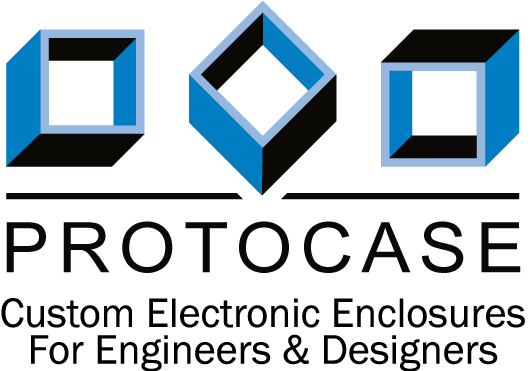
Finishes Guide

Protocase Inc.
 When you’re designing new electronic products and prototypes, you want a manufacturer to be able to build your enclosure and part designs quickly and without any hassles. That’s why Protocase leads the industry – we help you get your projects completed by manufacturing your custom enclosures, parts and panels in 2-3 days, with no minimum order.
When you’re designing new electronic products and prototypes, you want a manufacturer to be able to build your enclosure and part designs quickly and without any hassles. That’s why Protocase leads the industry – we help you get your projects completed by manufacturing your custom enclosures, parts and panels in 2-3 days, with no minimum order.
But it’s not enough to build a plain metal enclosure or panel with the custom cutouts you need. At Protocase, we believe your custom projects and products should look exactly as you envision. We offer a wide variety of finishes and marking options so that you can choose what will work best for your specifications and brand requirements:
Powdercoat: Widely recognized as the industry standard for painting metal, as it provides a high quality, highly durable finish. Choose from many different colors and textures.
Bare Metal Finishes: If you prefer the look of metal without powdercoat paint, you have options that will still provide a sleek, professional look. For Grained Finish, parts are deburred and then given a specific linear grain direction via brushing. Vibratory Finish smooths and imparts a non-directional finish by running the parts through a vibratory tumbler.
Passivation: Stainless steel parts are treated with Citric Acid to remove free iron from the metal’s surface in order to prevent rust. If your Stainless Steel parts will be powdercoated, passivation will not be necessary, because the powdercoat will prevent the metal from corroding.
Chem-Film Coating: A chemical process for aluminum that creates a surface that is corrosion resistant, durable and exhibits stable electrical conductivity. Chem-film conversion coating is also commonly referred to by its brand names, including Anodine, Iridite and Alocrom.
Anodizing: Aluminum parts are treated with an acid bath and electricity, which, when used together, becomes a controlled oxidization that enhances the naturally occurring oxide layer on aluminum. This makes the surface thicker and harder. There are several color options for anodizing. One caution – there is additional lead time for this finish, as it is completed by a third-party supplier.
Tin Plating: A popular option for custom copper bus bars, tin plating is a simple immersion technique that deposits pure tin onto copper in order to improve corrosion resistance, electrical conductivity and solderability. Similar to anodizing, tin plating is completed by a third-party supplier, which means there is additional lead time.
Laser Marking: Also known as etching or engraving, Laser Marking is an ultra precise and efficient means of permanently marking enclosures and parts with labels, serialization and images. There are six different types of laser marking, which each offer specific aesthetic features and textures. Protocase also offers basic forms of permanent marking, including dot peening and rubber stamping.
Graphics: We offer both direct digital printing and silkscreen, which each offer their own strengths and ideal use cases, depending on your needs. A good rule of thumb: digital print is best used for graphics with high amounts of detail, or when multiple colors are used in one graphic. Silkscreen, on the other hand, is best for flat graphics with a limited number of colors, as each color needs to be silkscreened separately.
Conclusion
Ultimately, our mission at Protocase is to make your life as easy as possible. As a one-stop shop for getting your custom enclosures, parts and panels manufactured, we make sure to offer a wide variety of finishes and processes. This way, you get the parts made quickly in the exact way you envision and require. Contact us by emailing info@protocase.com or calling 1-(866)-849-3911 to get started.
